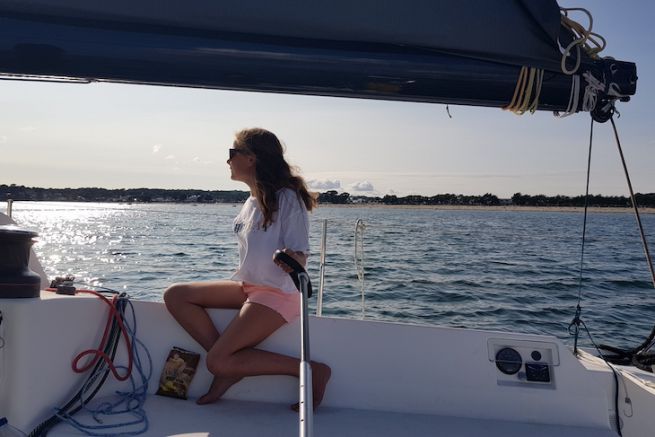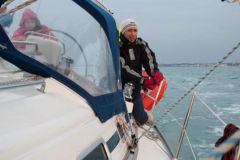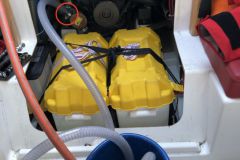Involve them in life on board
Involve your children in the life on board by setting up a few simple rules to live in a friendly and respectful way. On a boat, everyone participates, but remember to adapt the tasks to your children's age.
For the younger ones, ask them to set the table for example and clear up, tidy up their things daily, help you prepare meals. For older children, leave the dishes, some meals, etc. to them.
On a boat, you are quickly confined and can quickly lack privacy. So remember to explain to them to respect the sleep of others. In the evening as in the morning, if some people sleep, we whisper.
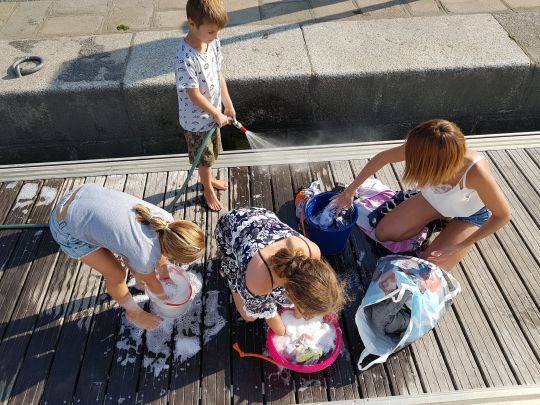
Give them a cabin
Children need to have a place of refuge and calm. A universe that is theirs and theirs. If possible, provide them with a cabin where they can rest, play, daydream or make cabins. The children have a capacity for imagination and they will have no difficulty in transforming the walls of their cabin into a slide at the cottage.
Don't forget the anti-roll cloths to keep children in place while they sleep and to prevent them from crashing against each other as the boat moves. Finally, if they are not used to sleeping during the day, don't forget the night masks!
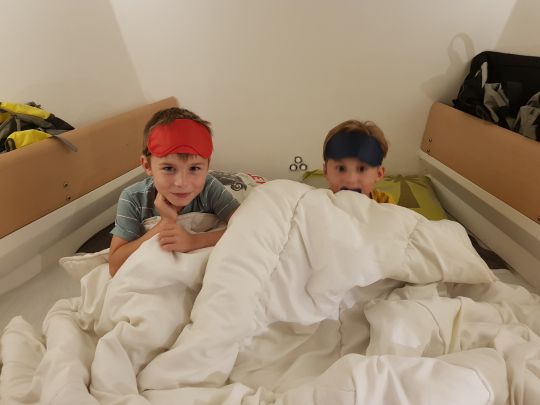
Doing activities on land...
Planning activities with your children is really important. Take advantage of shore stays to visit and discover the place of your stopover, but also to offer activities that are suitable for your children. Younger people will probably be more attracted by sand castles than a visit to a museum. The stopover allows them to exercise and unwind.
Or at sea
Take advantage of your anchorages to offer activities at sea this time. There's nothing better than diving from the cockpit, exploring the seabed with a mask and snorkel or taking a paddle ride around the boat. And for the luckiest of you, take the opportunity to teach them how to do Optimist or sail on small inflatable dinghies like the Tiwal.

Keep them occupied during long journeys
Long sails are not what children enjoy the most. Locked on board or in the cockpit, time seems long to them. Outside, take the opportunity to admire the sea, birds, landscapes, flying fish and playful dolphins that you may have the chance to meet.
For the rest, take with you some board games, some toys (the right box of Lego will develop the imagination) and why not some movies on a computer.
But the simplest activities are often appreciated. Sort the shells picked up at the ports of call and don't forget the leaves and markers for colouring and logbook drawings for children, go to maison?!
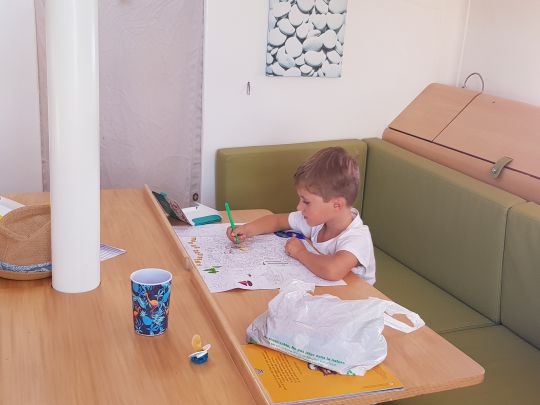
To interest them in navigation
Feel free to let them take the helm and involve them in navigation. When they grow up, they will be able to install fenders, roll up moorings... Make navigation fun by involving them, by holding them on a course, pulling on one end. They feel valued and invested with a mission. As they grow up, they can also be taught how to use a bearing compass and how to locate themselves on a map.
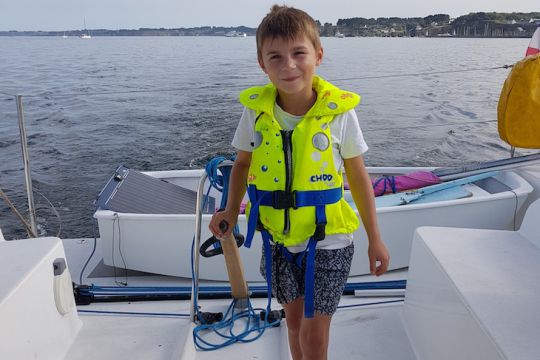
Managing seasickness
And yes, seasickness affects everyone and it's even harder when they're your little ones. Try to spend time with them and reassure them. Settle down together in a cabin, try to get them to sleep, sometimes it's better for them. Give them something to drink if they need it and leave a bucket handy.
If the containment is even worse. Dress him warmly, harness lifejacket and long and tie them in the cockpit. The central aisle will avoid changing the edges when manoeuvring.
And don't forget that seasickness is forgotten vite?!
